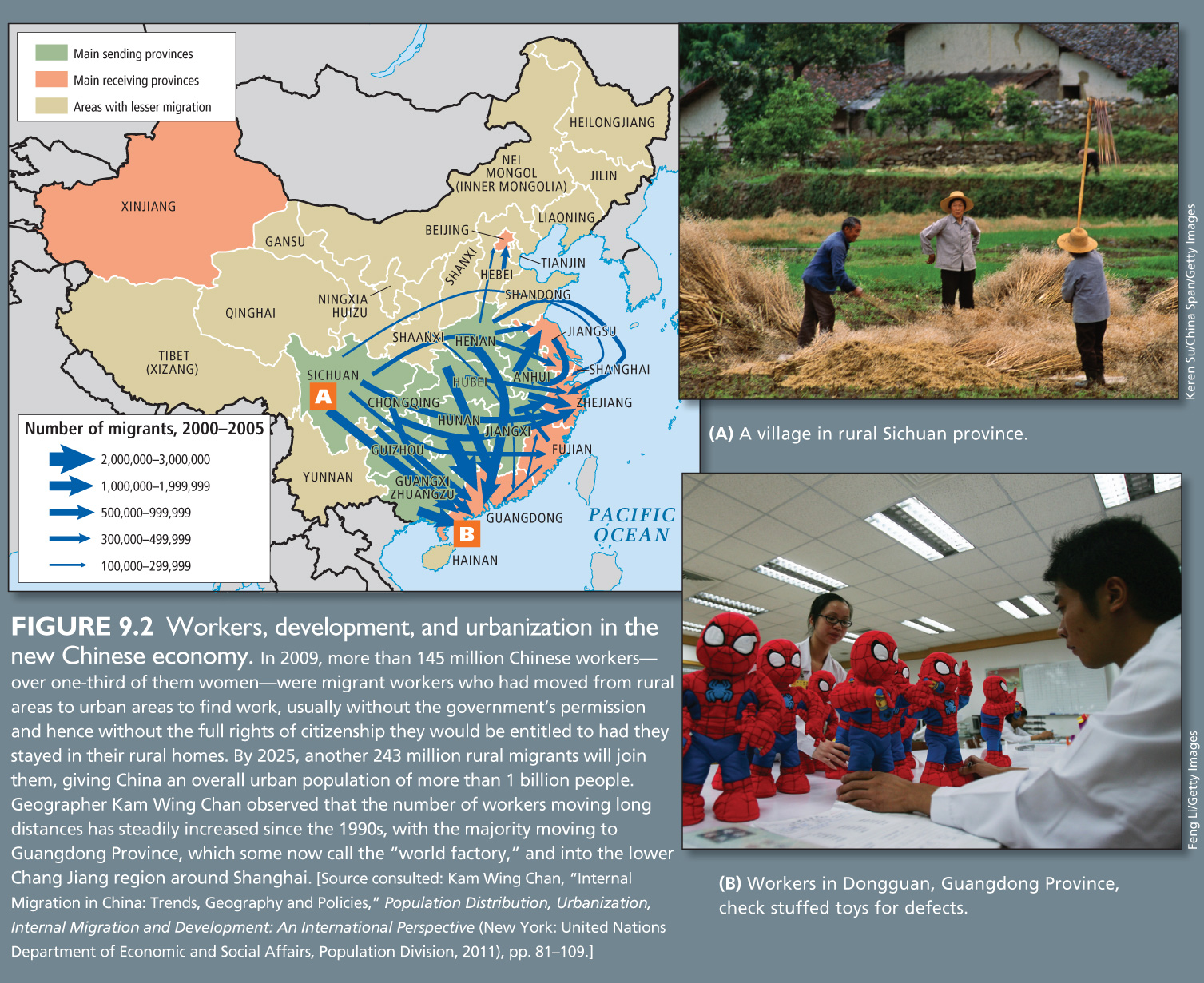
Figure 9.2: Workers, development, and urbanization in the new Chinese economy. In 2009, more than 145 million Chinese workers— over one- third of them women— were migrant workers who had moved from rural areas to urban areas to find work, usually without the government’s permission and hence without the full rights of citizenship they would be entitled to had they stayed in their rural homes. By 2025, another 243 million rural migrants will join them, giving China an overall urban population of more than 1 billion people. Geographer Kam Wing Chan observed that the number of workers moving long distances has steadily increased since the 1990s, with the majority moving to Guangdong Province, which some now call the “world factory,” and into the lower Chang Jiang region around Shanghai.
[Source consulted: Kam Wing Chan, “Internal Migration in China: Trends, Geography and Policies,” Population Distribution, Urbanization, Internal Migration and Development: An International Perspective (New York: United Nations Department of Economic and Social Affairs, Population Division, 2011), pp. 81– 109.]